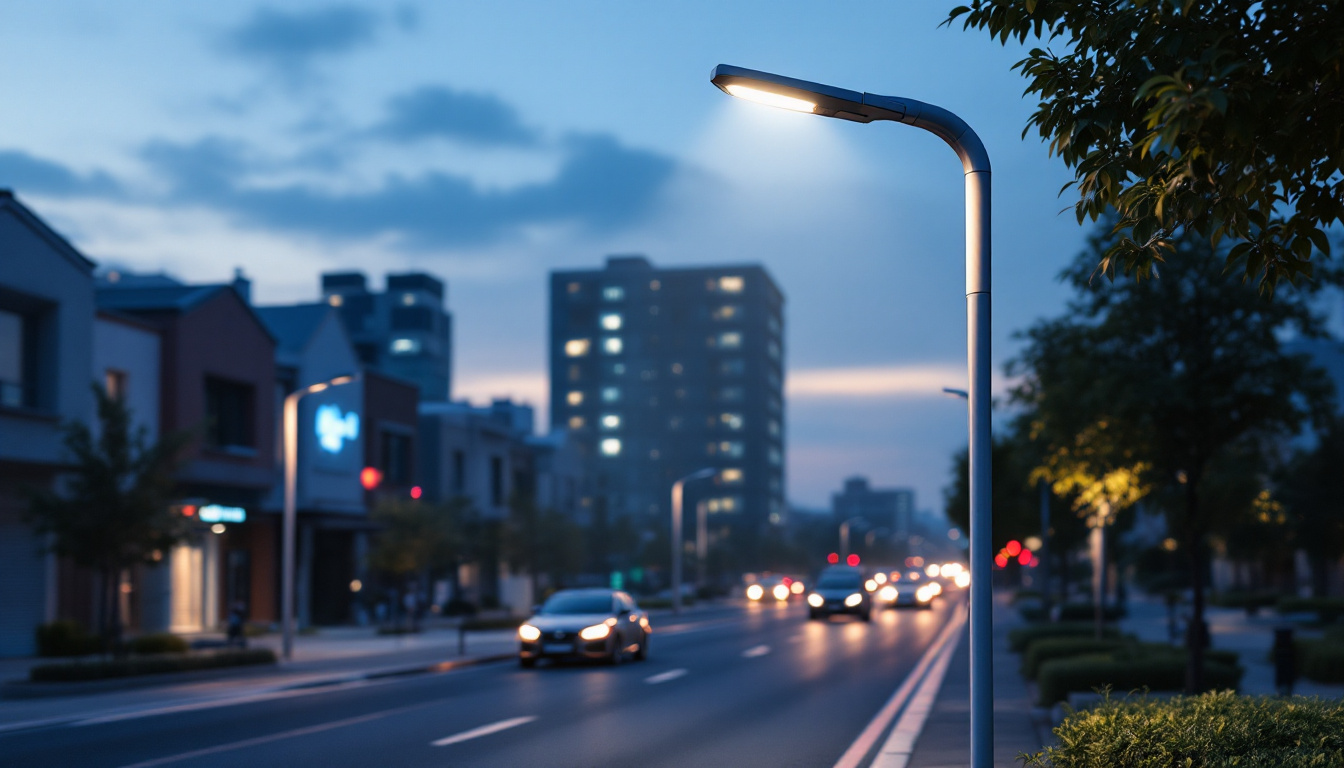
Lighting plays a crucial role in any office environment, impacting everything from employee productivity to overall aesthetics. Selecting the right light fixture is essential for creating an inviting and functional workspace. This article delves into the various aspects of office lighting, providing valuable insights for lighting contractors and designers.
Office lighting is not merely about illumination; it encompasses a range of factors that contribute to the overall work environment. Proper lighting can enhance mood, reduce eye strain, and improve focus, ultimately leading to increased productivity. In contrast, poor lighting can result in fatigue and discomfort, impacting employee performance. Studies have shown that well-lit environments can significantly boost morale and job satisfaction, leading to lower turnover rates and a more cohesive workplace culture.
Moreover, the right lighting can also influence the design and layout of an office. It can highlight architectural features, create a sense of space, and even affect the color perception of walls and furniture. For instance, warm-toned lighting can make a space feel more inviting and cozy, while cooler tones can promote alertness and concentration. Thus, understanding the importance of lighting is vital for any lighting contractor involved in office projects, as it plays a crucial role in shaping the overall aesthetic and functionality of the workspace.
Office lighting can be categorized into three primary types: ambient, task, and accent lighting. Each type serves a distinct purpose and should be integrated thoughtfully to create a well-lit environment. The interplay of these lighting types can significantly enhance the overall atmosphere of the office, fostering a productive and enjoyable work experience.
Ambient lighting provides general illumination for the entire office space. It is typically achieved through ceiling-mounted fixtures, such as recessed lights or fluorescent panels. The goal of ambient lighting is to create a uniform light level throughout the room, ensuring that all areas are adequately lit without causing glare. Additionally, incorporating dimmable options can allow for flexibility, enabling employees to adjust the light levels according to their personal preferences or the time of day, which can further enhance comfort and productivity.
Task lighting is focused illumination designed to assist employees in performing specific tasks. This type of lighting is essential for workstations, where detailed tasks such as reading, writing, or using a computer are performed. Desk lamps, adjustable fixtures, and under-cabinet lighting are common examples of task lighting. Furthermore, task lighting should be adjustable and positioned to minimize shadows and glare on work surfaces, ensuring that employees can work efficiently without straining their eyes. The integration of LED technology in task lighting has also gained popularity, as it offers energy efficiency and longer lifespans compared to traditional bulbs, making it a sustainable choice for modern offices.
Accent lighting adds visual interest and highlights specific areas or features within the office. This can include artwork, architectural details, or even plants. Accent lighting is often achieved through spotlights or wall-mounted fixtures, creating focal points that enhance the overall design of the space. By strategically placing accent lights, businesses can create a more dynamic environment that encourages creativity and collaboration among employees. Moreover, the use of colored or adjustable accent lighting can further personalize the workspace, allowing for seasonal changes or themed decorations that can invigorate the office atmosphere and keep it fresh and engaging.
Selecting the right light fixtures for an office involves considering several key factors. Understanding these elements can help lighting contractors make informed decisions that align with the needs of the workspace.
The layout and design of the office play a significant role in determining the type and placement of light fixtures. Open-plan offices may require different lighting solutions compared to enclosed spaces. It is essential to assess the spatial dynamics and how light will interact with the layout to ensure optimal illumination. For instance, in an open office, using pendant lights or track lighting can help create zones within the space, allowing for both collaboration and focused work. Additionally, the height of ceilings and the presence of windows should be taken into account, as natural light can significantly influence the effectiveness of artificial lighting.
Color temperature, measured in Kelvin (K), affects the ambiance of the office. Warmer tones (2700K-3000K) create a cozy and inviting atmosphere, while cooler tones (4000K-5000K) promote alertness and concentration. Selecting the appropriate color temperature can enhance the overall mood and productivity of employees. Moreover, it’s beneficial to consider the tasks being performed in different areas of the office; for example, creative spaces may benefit from warmer light to inspire innovation, while areas designated for analytical work might require cooler, more focused lighting to enhance clarity and concentration. The use of tunable white lighting systems can also provide flexibility, allowing for adjustments throughout the day to match the natural light cycle.
In today’s environmentally conscious world, energy efficiency is a critical consideration. LED fixtures are becoming increasingly popular due to their longevity and lower energy consumption. Lighting contractors should evaluate energy-efficient options that not only reduce costs but also contribute to sustainability goals. Additionally, incorporating smart lighting systems can further enhance energy savings by allowing for automated controls that adjust lighting based on occupancy and daylight availability. This not only minimizes waste but also creates a more responsive and adaptive lighting environment, which can lead to increased employee satisfaction and well-being. Furthermore, considering the lifecycle costs of lighting solutions, including maintenance and replacement, can provide a clearer picture of the long-term benefits of investing in high-quality, energy-efficient fixtures.
Incorporating lighting controls and automation can significantly enhance the functionality of office lighting. Smart lighting systems allow for adjustments based on occupancy, time of day, or natural light levels. This flexibility can lead to energy savings and improved user experience.
There are various types of lighting controls available, including dimmers, timers, and occupancy sensors. Dimmers enable users to adjust light levels according to their preferences, while timers can automate lighting schedules to align with office hours. Occupancy sensors detect movement and turn lights on or off accordingly, ensuring that energy is not wasted in unoccupied spaces.
For larger office spaces, integrating lighting controls with building management systems (BMS) can streamline operations and enhance energy efficiency. A BMS allows for centralized control of lighting, heating, and cooling systems, providing a comprehensive approach to managing the office environment.
When selecting light fixtures for office spaces, it is imperative to adhere to safety and compliance standards. These regulations ensure that lighting installations meet necessary safety requirements and provide a safe working environment for employees.
Each region may have specific regulations regarding lighting installations, including energy codes and safety standards. Lighting contractors should familiarize themselves with local codes to ensure compliance and avoid potential penalties. This knowledge is crucial for delivering projects that meet legal requirements and client expectations.
In addition to general office lighting, emergency and exit lighting are critical components of safety compliance. These fixtures should be strategically placed to guide occupants to safety in the event of an emergency. Proper signage and illumination of exit routes can save lives, making it a non-negotiable aspect of office lighting design.
The world of office lighting is continually evolving, with new trends emerging to enhance both functionality and aesthetics. Staying informed about these trends can help lighting contractors provide innovative solutions that meet modern workplace demands.
Biophilic design emphasizes the connection between nature and the built environment. Incorporating natural elements, such as daylight and organic materials, into office lighting can create a more pleasant and productive atmosphere. Large windows, skylights, and fixtures that mimic natural light are examples of biophilic lighting solutions.
As workspaces become more dynamic, the need for flexible and adaptive lighting solutions is increasing. Modular lighting systems that can be easily reconfigured to suit different tasks or layouts are gaining popularity. This adaptability allows offices to respond to changing needs without significant renovations.
The rise of smart technology has transformed the way lighting is integrated into office spaces. Features such as automated dimming, color-changing capabilities, and remote control options enhance user experience and energy efficiency. Lighting contractors should consider incorporating smart technology into their designs to meet the expectations of modern workplaces.
Lighting is a fundamental aspect of office design that significantly influences employee well-being and productivity. By understanding the various types of lighting, factors to consider when choosing fixtures, and current trends, lighting contractors can create effective and appealing lighting solutions for any office environment.
From ensuring compliance with safety standards to embracing innovative technologies, the role of a lighting contractor is multifaceted and essential. By prioritizing thoughtful lighting design, it is possible to transform office spaces into vibrant and functional environments that inspire creativity and collaboration.
As the demand for well-designed office spaces continues to grow, staying informed and adaptable will be key to success in the lighting industry. Whether through energy-efficient solutions, smart technology, or biophilic design, the future of office lighting holds exciting possibilities for those willing to embrace change.
Ready to elevate your office lighting designs with the best in spec-grade lighting products? At LumenWholesale, we provide lighting contractors with an unbeatable combination of quality, affordability, and convenience. Say goodbye to inflated markups and hello to our extensive selection of reliable, high-performance lighting solutions. With free shipping on bulk orders, you can ensure your projects shine without breaking the bank. Don’t compromise on excellence—choose LumenWholesale for Wholesale Lighting at the Best Value and make every workspace a beacon of productivity and style.

Discover the essential insights every lighting contractor needs to know about fluorescent lighting.

Discover how LED street light poles can revolutionize urban lighting projects by boosting efficiency and sustainability.

Discover how ceiling light fixture LEDs can revolutionize your lighting projects by enhancing efficiency and reducing energy costs.

Discover the essential guide for lighting contractors with our comprehensive overview of ceiling lamps.